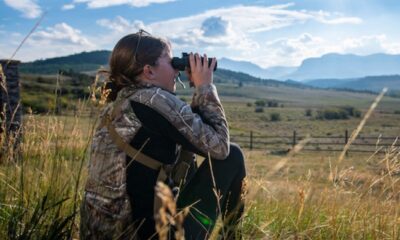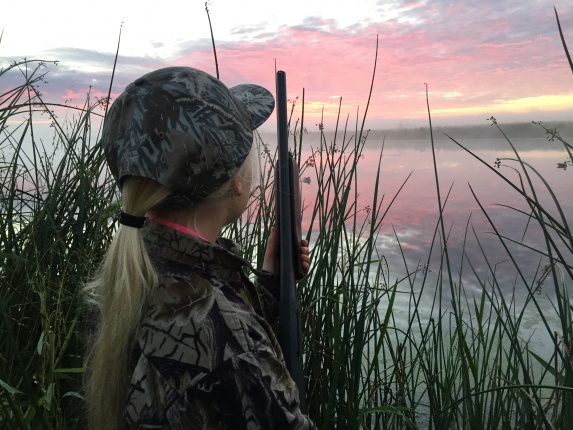Sports
My Landscape Brings All the Birds to the Yard

Nice tit!
WARNING: This article contains tanagers, tits and boobies!
Our gardens and landscaping add color and a wealth of natural elements to our yards, and these areas attract birds that infuse action, color, songs, and behavior into our yards. As another change in seasons approaches, it’s an opportunity make a few easily improvements for local and migrant songbirds and hummingbirds that will be the first wave of fall migration. With a little thought, planning, and effort, you can attract and benefit birds on their way south, including species you haven’t seen before in your yard.
At this time our gardening activities can also benefit recent fledglings as they disperse, along with dispersing yearlings, adults, and family groups. Some migrants are already making their way south, and many more will follow. Bird populations are at an annual high now after the nesting season, so if we can increase the resources they find in our yards, we can improve the potential for survival among birds during this important time of the year.
First of all, consider the way you provide water. A dependable fresh water source will draw birds like a magnet while providing all important drinking and bathing water. One or more bird baths will do, as simple or as ornate as you please. Some people like to have one as part of their feeding station, plus one in a garden area or as a centerpiece in their backyard or front. The motion and sound of the dripping water is irresistible to many birds too, and it helps birds locate a water source, bringing birds to your yard that might otherwise pass by. And a mister will attract some enjoyable hummingbird action as they fly through the mist.
What’s Working and What’s Not
Since most of us already have some garden and landscaping elements in place, consider what’s working and what’s not. The “what’s not working” aspect of that statement has never really been addressed in Backyard Birding articles before, so let’s consider it here. Is there a bush or tree, or a section of your yard that just isn’t fulfilling your interests? Maybe there is a better option for that space; or maybe you can add some flowering plants to the base of them, or plant a couple vines to climb up the bark of a particularly bare tree trunk.
You get the idea; a hedge or row of bushes can provide a double purpose when you add a second layer of flowering plants on the show side, or 3 half moon-shaped flower gardens – 2 with red and pink tubular flowers – favorite nectar producers for hummingbirds – with 1 filled with sunflowers to attract goldfinches and cardinals. Then, in that one space you have provided shelter, roosting, and nesting sites in the hedge or bushes, while providing a layer of shorter plants to attract other species. That’s one example to get your creative juices flowing; you know your yard, and give some time to think about what’s there now, and how to improve it for you, your family, and birds.

This tanager is barely legal!
Something as simple as breaking up established straight-line landscaping to provide some curves, meandering garden beds; even circular and oval garden areas will add interest to your yard. Then fill the garden spaces with flowers that are in season now and through the next 6 or 8 weeks, to nourish visiting hummingbirds looking for a boost as they make stops along their way across southern Canada and the Lower 48 States. Potted plants are always an option too, and pots permit you to position them in different places as your interests change month to month. They even allow you to change the plants within as that interest arises.
Landscaping options are usually made on a larger scale than garden options and their plantings tend to be more permanent, including deciduous trees, conifers, shrubs, and vines. Consider developing one secluded area of shrubs, conifers, and mixed plantings for birds to rest and forage. Whenever possible, emphasize native plant selections, which tend to attract more native birds. For example, wild grapes are known to be eaten by more than 50 species of birds.
The Right Stuff
Picking the right plants to attract birds to your area will take some research at your local nursery, or online. Flowering and fruiting trees will be especially attractive to birds in season, but almost all native trees, shrubs, and plants will benefit birds with cover, nesting sites, and shade at different times of the year. Take note of the areas in your yard that receive full sunlight or shade, and choose plants that are appropriate for each lighting position. Make your selections to improve the look of your yard in your eyes, whether making additions or replacing old or existing trees or shrubs that aren’t making the grade any more.

Bada Bing, it’s a Booby!
Overall, as dedicated birders we are trying to maintain, improve, and expand urban and suburban habitat that will benefit birds and replace habitats previously disturbed. In urban and suburban areas we can help now by creating and improving gardening and landscaping that will benefit late summer and fall birds in passage. Start with something simple; for example, most yards are dominated by short-cropped lawns, so try to create lush, wild growth in a few places to simulate a more natural environ and to break up an expanse of lawn.
Even just permitting lawn along the edges of shrubs or areas surrounding trees can offer some habitat options, and the longer grass will carry over the winter months to provide a level of cover and windbreaks. Edge areas provide the widest variety of perching places, nest sites, and food types. You can create a meandering line where 2 types of habitat meet, such as where shrubs and lawn meet. These edge areas provide the most variety of perches, potential nest sites, and foods. With a little creative thought and follow through you can easily expand your yard’s attractiveness and impact for birds in coming weeks, months, and years, and enjoy the process.
-

 Hiking & Climbing1 week ago
Hiking & Climbing1 week agoWhen Bears Bring the Drama: A Tail—or Should I Say “Tale”?
-

 Adventure1 month ago
Adventure1 month agoREACTION: Trump’s Make America Beautiful Again Agenda
-

 Gear2 months ago
Gear2 months agoLet Freedom RING! Primary Arms’ Independence Day Category Sale Starts NOW
-

 Adventure2 months ago
Adventure2 months agoU.S. Bighorn Sheep Going Home to Canada
-

 Fishing4 weeks ago
Fishing4 weeks agoMy Wacky Bush Brings All the Bass to the Yard
-

 Camping & Survival2 days ago
Camping & Survival2 days agoField Dressing 101: Knowing When It’s Their Turn
-

 Adventure3 weeks ago
Adventure3 weeks agoNo Ivy Required: University of Montana’s New Center for Hunting and Conservation





